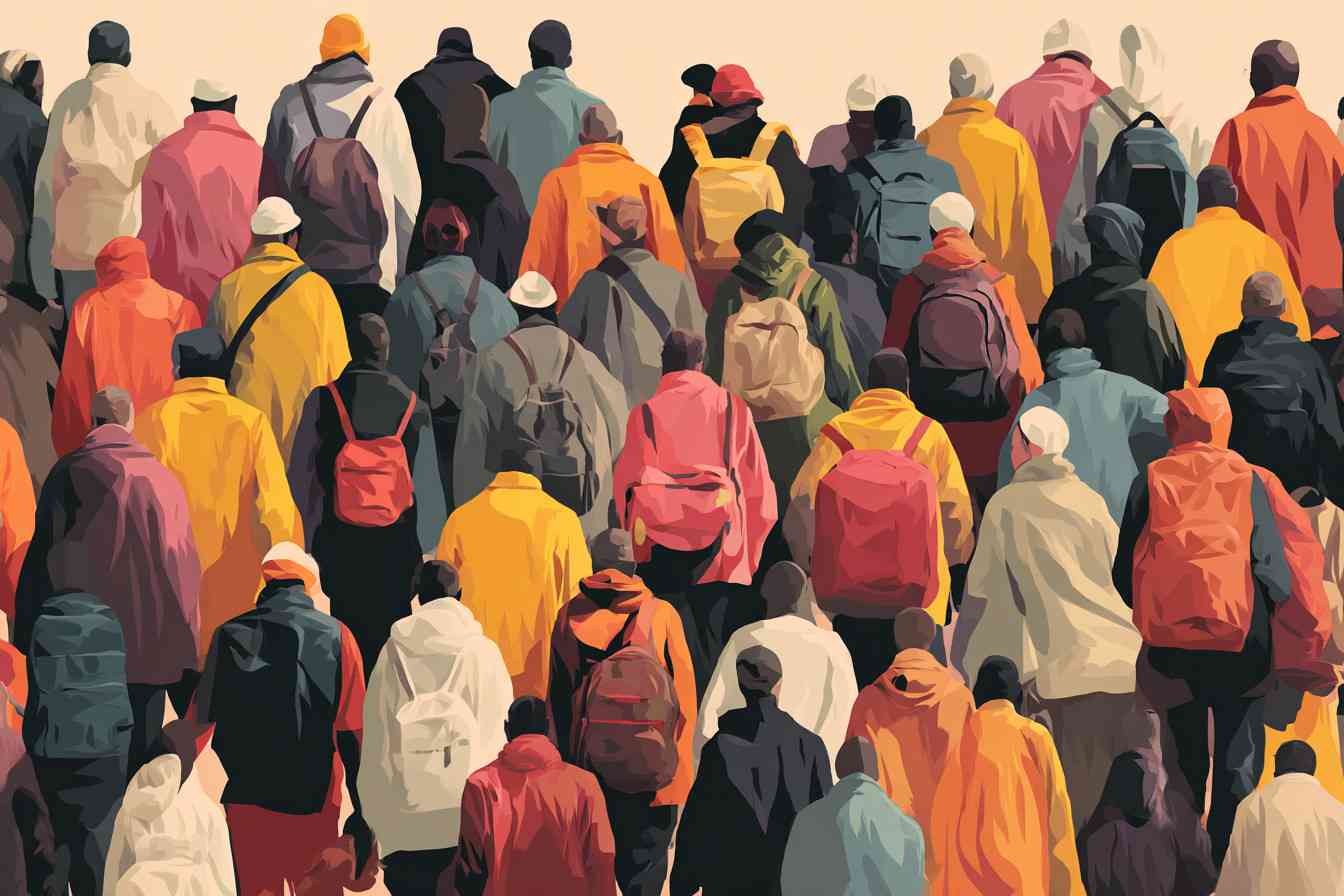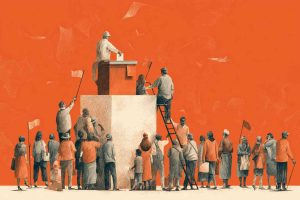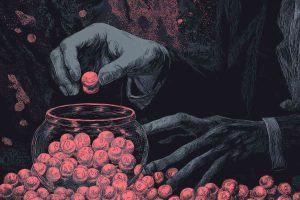Skewed Influx: Why an Overrepresentation of Young Men Among Asylum Seekers Threatens Stable Societies

The demographics of modern asylum migration
In public discourse, asylum migration in Europe is often portrayed as a noble moral duty, a necessary response to human suffering. The media typically show families fleeing war, hunger, and oppression. But statistics reveal a very different picture. In reality, the majority of asylum seekers in Europe are young, single men. According to Eurostat figures from 2023, over 70% of all first-time asylum applications in the EU were submitted by men, with the peak in the 18 to 34 age group (Asylum statistics, Eurostat).
The same trend is visible in Germany, France, Belgium, and the Netherlands. In the Netherlands, 74% of male asylum seekers in 2023 were between 18 and 35 years old (Asielrapportage, IND). Many come from countries such as Syria, Afghanistan, Somalia, Eritrea, Nigeria, and Morocco. Only a minority arrive with family members, and women account for less than a quarter of the total.
The overrepresentation of young men raises fundamental questions about the stability of receiving societies, especially when these numbers rise to tens of thousands per year, structurally and long-term.
Why young men migrate
The choice of young men as migrants is strategic. They are more mobile, physically stronger, cheaper to transport, and often expected to send money back to their families. In many cases, this is economic migration disguised as asylum. The boundaries between refugee and economic migrant have blurred so much that it has become almost impossible to distinguish, especially as the evaluation process is slow, politically sensitive, and ideologically charged.
The motivations are therefore not always humanitarian. These are young men migrating in hopes of a better life, opportunities, status, safety, or simply financial survival. This is understandable, but when this migration occurs en masse, indiscriminately, and without control, serious side effects emerge.
Structural pressure on housing and public services
The large-scale influx of young men places enormous pressure on housing, social welfare, education, and healthcare. In the Netherlands, the housing shortage is acute, especially in the social rental sector. Municipalities are required to prioritize housing for asylum permit holders, leading to anger and frustration among Dutch citizens who have been on waiting lists for years.
According to CBS, over 16,000 status holders were given housing in 2023. These are homes that are no longer available to low-income Dutch people, students, or first-time home seekers. These homes are often designed for family reunification, which means more residents per household and greater pressure on schools, hospitals, and youth care services.
In addition, interpreters, integration courses, welfare payments, and legal procedures incur structural costs. The taxpayer foots the bill for a reception industry in which migrants remain dependent on the state for years without making any demonstrable contribution (Integratie in zicht?, SCP).
Cultural alienation and integration problems
Young male migrants often come from societies where democracy, equality, and the rule of law are either unknown or actively rejected. Many have received little to no formal education, speak no European languages, and hold worldviews that directly contradict Western norms.
This creates enormous integration problems. Instead of assimilating into the host society, we often see the opposite: the formation of parallel communities governed by religious rules and dominated by radical imams, tribal clans, or criminal networks.
The cultural distance between host countries and countries of origin is often far too great to bridge naturally. Concepts such as gender equality, open homosexuality, criticism of religion, or female authority are unthinkable, and sometimes even offensive, to many young migrants. This leads to tension, conflict, and social alienation.
In German cities such as Duisburg and Essen, there are neighborhoods where German women are advised not to walk the streets alone. In the Netherlands, in some neighborhoods, native women are effectively excluded from cafés, swimming pools, or mosques. These are subtle but clear signs of a slow erosion of Western liberties in the public space.
Sexual imbalance and social instability
A society in which women no longer feel safe in public space is no longer a free society. The influx of young, single men from conservative cultures leads to sexual imbalance and social instability. In many cities, we see increasing street harassment, sexual violence, and boundary-crossing behavior.
The infamous mass sexual assaults in Cologne during New Year’s Eve 2015, committed by North African men, served as a wake-up call for Germany and beyond (Kölner Silvesternacht, Spiegel). In Sweden, gang rapes and sexual crimes have significantly increased, with young migrants disproportionately represented among the perpetrators (Invandring och brottslighet, Brå).
In societies that cherish sexual freedom, women’s rights, and public safety, this is an unacceptable development. Yet instead of recognizing this reality, policymakers often choose denial, minimization, or justification.
Psychosocial effects on the native population
The presence of large numbers of young men without social ties, holding different behavioral norms, leads not only to direct insecurity, but also to indirect stress among the native population. Locals move out of multicultural neighborhoods, women avoid public transportation, and parents withdraw their children from schools where Dutch is no longer spoken.
This so-called “white flight” is not a racist reflex but a rational response to the loss of social cohesion, safety, and shared values. When people no longer recognize their neighborhood, school, or city, alienation and distrust grow. And when these feelings are ignored by politics, citizens radicalize, both politically and socially.
Crime and radicalization
While not every migrant is a criminal, it is undeniable that young men are the group most often involved in crime, globally. But when these men also come from unstable, violent, and patriarchal cultures, the risk increases for violent offenses, drug trafficking, and extremism.
In France and Belgium, there are countless examples of young asylum seekers or their sons becoming involved in jihadist networks, terrorist attacks, or street gangs. In the Netherlands, young permit holders are increasingly involved in sexual offenses and violence against public workers. In Austria and Germany, the number of violent incidents at asylum centers rises each year, often between groups from different ethnic or religious backgrounds (Sicherheitsbericht, BMI Österreich).
International treaties and the EU’s stranglehold
A large part of the problem lies in international treaties and European regulations. The 1951 Geneva Refugee Convention was designed in the context of national wars, not today’s massive migration flows from Africa and Asia. Yet it is still used to justify nearly every migrant’s access to the asylum process.
The Dublin Regulation fails because countries like Italy and Greece cannot handle the volume, and migrants often travel onward regardless. The EU refuses to close borders and forces member states to accept relocation and reception quotas, often against the will of their own citizens. The asylum process itself is routinely abused: once a migrant sets foot on European soil and submits a request, they are often entitled to remain for years, with or without approval.
Migration as a transit process: the endpoint never arrives
Many young men do not view Europe as their endpoint, but as a step in a longer journey toward prosperity. Even after rejection, many disappear underground, live illegally, or try again in another country. Thousands refuse to return to their home countries, even after final denial.
Repatriation in practice is rare. International conventions often forbid forced deportation, and countries of origin are uncooperative. As a result, a structural nuisance group arises: young men without status, without work, without rights, but also without obligations. A permanent shadow class.
Ideological interests: who benefits?
Why does this system persist? Because powerful actors benefit. NGOs, left-wing parties, churches, human rights organizations, and supranational institutions have ideological or financial interests in maintaining open borders. Every migrant means subsidies, employment, and influence. Critics are labeled racist, xenophobic, or fascist, regardless of their arguments.
The media play a harmful role by ignoring abuses, distorting statistics, or demonizing dissent. The democratic will of citizens is ignored in the name of “international solidarity,” while the consequences are deeply local and concrete.
Conclusion: realism over ideology
The overrepresentation of young men among asylum seekers is not accidental but a structural pattern. The consequences are serious: social tensions, cultural conflicts, sexual imbalance, pressure on welfare systems, crime, and alienation. As long as this reality is not acknowledged, policies will continue to fail, to the detriment of both host societies and migrants themselves.
Migration can only succeed when it is targeted, controlled, and selective. The mass, uncontrolled influx of young men from incompatible cultures is not a form of solidarity but of self-destruction. It is time for a sober, factual, and fearless reassessment of migration policy. A society that fails to guard its borders will eventually lose its freedom, safety, and identity.


















